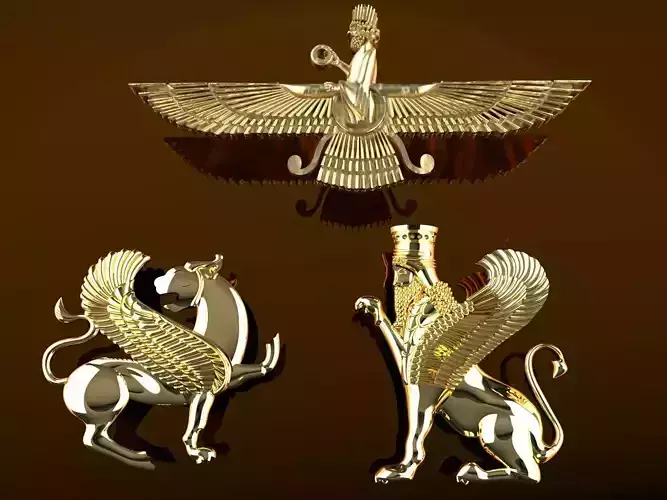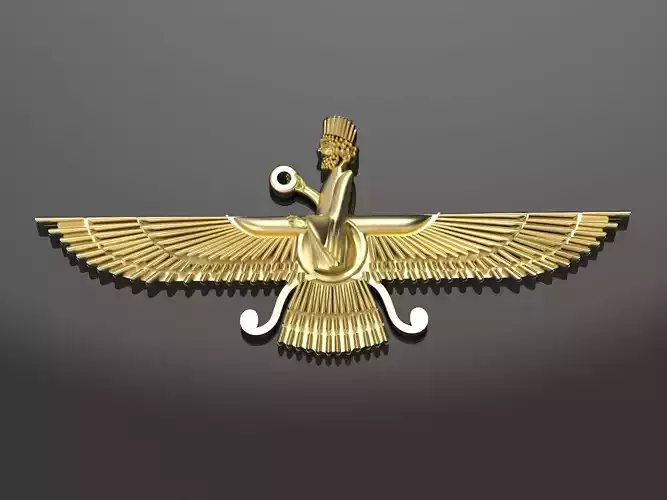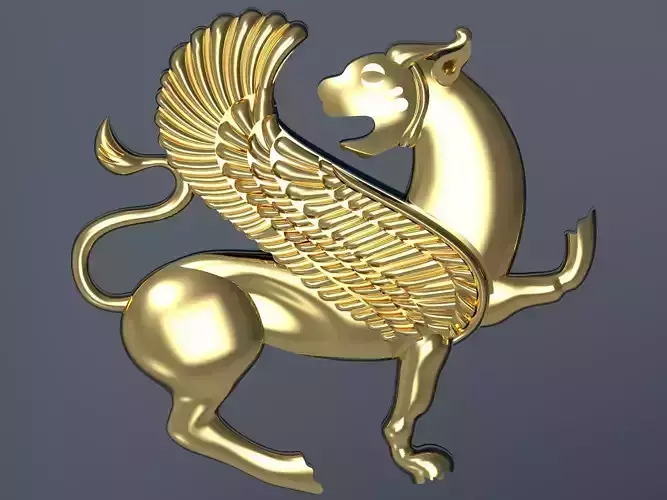1/17
3D MODELS IN THIS COLLECTION
The Achaemenid Empire (/ əˈkiːmənɪd /; Old Persian. romanized: Xšāça, lit. 'The Empire'), also called the First Persian Empire, [16] was an ancient Iranian empire that was based in Western Asia and founded by the king Cyrus the Great. The empire reached its greatest extent under king Xerxes I, who conquered most of Northern and Central Greece, including Athens, in 480 BC. At its greatest extent, the empire stretched from the Balkans and Eastern Europe to the Indus Valley in the east. The empire was larger than any previous empire in history, spanning a total of 5.5 million square kilometers (2.1 million square miles).
The empire has its beginnings in the 7th century BC, when the Persians settled in the south-western portion of the Iranian Plateau, in the region of Persis. From this region, the former king Cyrus the Great went on to defeat the Medes, Lydia, and the Neo-Babylonian Empire and established the Achaemenid Empire.
The Achaemenid Empire is known for imposing a successful model of centralized, bureaucratic administration through the use of satraps; its multicultural policy; building infrastructure, such as road systems and a postal system; the use of an official language across its territories; and the development of civil services including its possession of a large, professional army. The empire's successes inspired the use of similar systems in later empires.
Alexander the Great, an ardent admirer of Cyrus the Great, conquered most of the empire by 330 BC. Upon Alexander's death, most of the former territory of the empire fell to the rule of the Ptolemaic Kingdom and Seleucid Empire. The Iranian elites of the central plateau reclaimed power by the second century BC under the Parthian Empire. NAME:The term Achaemenid means of the family of the Achaemenis/Achaemenes Haxāmaniš; a bahuvrihi compound translating to having a friend's mind). Achaemenes was himself a minor seventh-century ruler of the Anshan in southwestern Iran, and a vassal of Assyria.
Around 850 BC the original nomadic people who began the empire called themselves the Parsa and their constantly shifting territory Parsua, for the most part localized around Persis. The name Persia is a Greek and Latin pronunciation of the native word referring to the country of the people originating from Persis . The Persian term Xšāça , meaning The Empire was used by the Achaemenids to refer to their multinational state.The Persian nation contains a number of tribes as listed here. ... : the Pasargadae, Maraphii, and Maspii, upon which all the other tribes are dependent. Of these, the Pasargadae are the most distinguished; they contain the clan of the Achaemenids from which spring the Perseid kings. Other tribes are the Panthialaei, Derusiaei, Germanii, all of which are attached to the soil, the remainder—the Dai, Mardi, Dropici, Sagarti, being nomadic.The Achaemenid Empire was created by nomadic Persians. The Persians were an Iranian people who arrived in what is today Iran c. 1000 BC and settled a region including north-western Iran, the Zagros Mountains and Persis alongside the native Elamites. For a number of centuries they fell under the domination of the Neo-Assyrian Empire (911–609 BC), based in northern Mesopotamia.[citation needed] The Persians were originally nomadic pastoralists in the western Iranian Plateau. The Achaemenid Empire was not the first Iranian empire, as the Medes, another group of Iranian peoples, established a short-lived empire and played a major role in the overthrow of the Assyrians.
The Achaemenids were initially rulers of the Elamite city of Anshan near the modern city of Marvdasht;the title King of Anshan was an adaptation of the earlier Elamite title King of Susa and Anshan.There are conflicting accounts of the identities of the earliest Kings of Anshan. According to the Cyrus Cylinder (the oldest extant genealogy of the Achaemenids) the kings of Anshan were Teispes, Cyrus I, Cambyses I and Cyrus II, also known as Cyrus the Great, who created the empire (the later Behistun Inscription, written by Darius the Great, claims that Teispes was the son of Achaemenes and that Darius is also descended from Teispes through a different line, but no earlier texts mention Achaemenes). In Herodotus' Histories, he writes that Cyrus the Great was the son of Cambyses I and Mandane of Media, the daughter of Astyages, the king of the Median Empire.
REVIEWS & COMMENTS
accuracy, and usability.




















